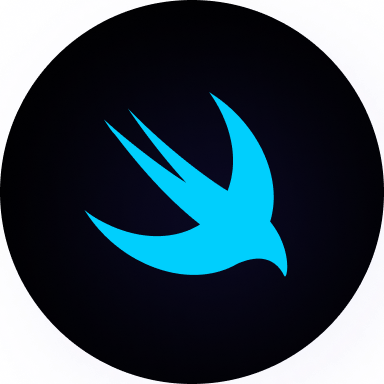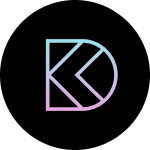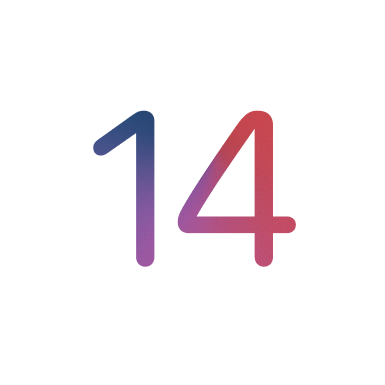Page Scroll Position
Add to favorites
Prototype an onboarding experience with 3 screens and use the scroll position to set the page indicator
Play video
Advanced Prototyping in ProtoPie
1
Advanced Prototyping with ProtoPie
11:48
2
Quick Prototyping
11:46
3
Start Animation and Sequence
12:36
4
Drag and Release
9:38
5
Toggle with Conditions
11:48
6
Screen Transition
12:53
7
Pull to Dismiss
6:59
8
Page Scroll Position
11:57
9
Input and Submit
13:41
10
Chain and Drag 3D
7:45
11
Formula and Detect
16:37
12
Range and Card Animation
15:32
13
Variable and Detect Mouse
12:02
14
Sensors and Receive
12:47
Getting Started
To get started, open ProtoPie and create a new Pie. Import the following files from Sketch: Login, Sign Up and Learn More, all @3x.
Shared Elements
We'll start off by selecting the first scene. This scene also contains some elements that will be shared across the scenes. To automatically create a full screen, select every element and create a group, rename the group to Login. Next, we'll remove the shared items (Status Bar and Dots) from all the scenes.
Login
Select the Login scene, click on Container and choose the Paging Container option. Set both the width and the height to 100% for Container 1 and drag Login inside this container. Container 1 will act as the paging container for all three of our pages.
Sign up
Go to the second scene and follow the same steps for Sign Up as well. Select the elements and group them together. Rename the container to Sign Up and paste it inside Container 1, which is in the first scene. In position, set X axis equal to 375.
Learn more
Lastly, let's do the same for the third scene. Go to the third scene, create a container, rename it to Learn More and then paste it inside Container 1. Set the X position to 750. Now, we have three screens inside Container 1. This'll enable us to swipe back and forth between these screens. Rename Container 1 to Page Scroll.
Detect
Detect allows us to see changes in any property in any layer. In order for the user to see which page they're on, we need to add a Page Indicator. To do that, select Page Scroll, click Add Trigger button and choose Detect under Conditional.
Condition
In this step, we'll add a Condition and set the property to Scroll instead of X. For the first Condition, set the scroll value to 0. Scroll value signifies the offset. Now, we'll select the Dots container and set the opacity. Set the opacity for the first dot to 100% and then for the second and the third, set it to 30%.
Dynamic import
The problem is that they are already, by default, with opacity. To resolve this we'll update our layers. Go back to Sketch and make sure that the opacity for all 3 dots is set to 100%. Import Login from Sketch again. One of the best things about ProtoPie is that it detects all the layers that we've on it to the layers we've on Sketch and automatically updates the ones that have been changed without affecting the structure. You'll notice that it detected that only three layers were changed.
Condition
Now, select the second and the third dots and set the default opacity to 30%. We'll be adding the other two conditions now. Firstly, copy and paste the first condition twice. Set the Scroll Value for the second condition to 375 and for the third one, set it to 750. The next step is to set opacity.
Select the second condition and set the opacity for the first dot to 30% and the middle dot to 100%.
For the third condition, which is the third page, set the opacity of the first dot to 30% and the third dot to 100%.
Background Color
To ensure that the background color changes as we scroll, create a Rectangle that is equal to the size of our background and place it underneath everything. Rename the rectangle to Background and set the color to be the same as that of the page. Please make sure to remove the background for each of the screens i.e. the layer named Card. Now, select Background and add Color to our Conditions. For the first condition, set the color to be #5044DE, for the second one, set it to #E95B65 and for the third one, set it to #017AFF.
Color Animation
In this step, we'll work towards making the color animation smoother. To do so, select Color from all three conditions simultaneously and set the Duration to 0.5.
Realtime Detection
Start off by creating a new layer Text. Put it at the top, center it and set its size to 50 X 22. Set the text to "0" by default.
Set the color to #FFFFFF, center it and then set the font-size to 12px.
Lastly, add fill to #000000, 30% and the radius to 5.
Now, to change the text value, click on Detect and choose the Text option. Select Text 1 as our layer. For content, instead of Text, we'll choose Formula. Click 'fx' and press tilde to get search options, select Page Scroll and then scrollOffset.
`Page Scroll`.scrollOffsetTemplates and source code
Download source files
Download the videos and assets to refer and learn offline without interuption.
Design template
Source code for all sections
Video files, ePub and subtitles
Videos
ePub
Assets
Subtitles
1
Advanced Prototyping with ProtoPie
Create high-fidelity prototypes with variables, formula, conditions and sensors
11:48
2
Quick Prototyping
Learn the basics of ProtoPie and create a prototype for your entire app in minutes
11:46
3
Start Animation and Sequence
Learn how to use the Start trigger, animation responses and timing
12:36
4
Drag and Release
Use Drag, Touch Up and Touch Down to create gestures with cards
9:38
5
Toggle with Conditions
Create multiple animation states and toggle back and forth between them
11:48
6
Screen Transition
Create a custom transition between screens and that jumps to another scene
12:53
7
Pull to Dismiss
Create a dismiss interaction that transitions back to a previous screen
6:59
8
Page Scroll Position
Prototype an onboarding experience with 3 screens and use the scroll position to set the page indicator
11:57
9
Input and Submit
Prototype a Login experience with a form, error messages and a success modal
13:41
10
Chain and Drag 3D
Use the drag position to move and animate with perspective
7:45
11
Formula and Detect
Use object properties, functions and type conversions to power your prototype
16:37
12
Range and Card Animation
Detect a range of values to trigger a response and create screen transitions
15:32
13
Variable and Detect Mouse
Store dynamic values from your mouse and create a parallax effect
12:02
14
Sensors and Receive
Use Tilt to detect the angle on your device and Send & Receive values
12:47
Meet the instructor
We all try to be consistent with our way of teaching step-by-step, providing source files and prioritizing design in our courses.
Meng To
I design, code and write
Meng To is the author of Design+Code. Meng started off his career as a self-taught designer from Montreal and eventually traveled around the world for 2 years as his US VISA was denied. During his travels, he wrote a book which now has 35,000 readers.
40 courses - 194 hours

Master AI Prompting for Stunning UI
Learn how to leverage AI tools like Aura for creating beautiful designs, working with templates, and experimenting with advanced prompts. A concise guide for designers and developers to level up their skills.
10 hrs

Build SwiftUI apps for iOS 18 with Cursor and Xcode
In this course, we'll explore the exciting new features of SwiftUI 6 and Xcode 16 for building iOS 18 apps. From mesh gradients and text animations to ripple effects, you'll learn how to create polished, highly custom apps using the latest workflows. We'll also dive into using Cursor and Claude AI for AI-driven coding, helping you start strong and customize your apps.
5 hrs

Create your Dream Apps with Cursor and Claude AI
Learn to build your dream web apps from the ground up using Cursor, Claude AI, and a suite of powerful AI tools. This course covers everything you need, including React for frontend development, Firebase for backend integration, and Stripe for handling payments. You’ll also dive into advanced AI tools like Claude Artifacts, Galileo AI, v0.dev for UI, Ideogram for design generation, and Cursor Composer for full-scale development.
6 hrs

Build a React Site from Figma to Codux
In this course, you'll learn to build a website from scratch using Codux, starting with a Figma template. You’ll master responsive design, collaborate with developers on a real React project, export CSS from Figma using Locofy, set up breakpoints with media queries, add CSS animations, improve SEO, create multiple pages with React Router, and publish your site. By following best practices, you’ll bridge design and development, improve your web design skills.
2 hrs

Create 3D UI for iOS and visionOS in Spline
Comprehensive 3D Design Course: From Basics to Advanced Techniques for iOS and visionOS using SwiftUI
3 hrs

Master No-Code Web Design with Framer
In this free Framer course, you'll learn to create modern, user-friendly interfaces. Start with dark mode and glass designs, then move from Figma to Framer, using vectors and auto layout for responsive websites. Add animations, interactive buttons, and custom components with code. Finally, you'll craft a design system suitable for teamwork or solo projects, all in a straightforward and practical approach.
4 hrs

Build SwiftUI Apps for iOS 17
In this course, we’ll be exploring the fresh and exciting features of SwiftUI 5! As we craft a variety of iOS apps from the ground up, we'll delve deep into the treasure trove that is SwiftUI's user interface, interactions, and animations.
4 hrs

Build Beautiful Apps with GPT-4 and Midjourney
Design and develop apps using GPT-4 and Midjourney with prompts for SwiftUI, React, CSS, app concepts, icons, and copywriting
4 hrs

Build SwiftUI apps for iOS 16
Create animated and interactive apps using new iOS 16 techniques using SwiftUI 4 and Xcode 14
5 hrs

Build a 3D Site Without Code with Framer
Design and publish a responsive site with 3D animation without writing a single line of code
3 hrs

Create 3D Site with Spline and React
Design and code a landing page with an interactive 3D asset using Spline and CodeSandbox
1 hrs

Build an Animated App with Rive and SwiftUI
Design and code an iOS app with Rive animated assets, icon animations, custom layouts and interactions
3 hrs

Build a SwiftUI app for iOS 15 Part 3
Design and code a SwiftUI 3 app with custom layouts, animations and gestures using Xcode 13, SF Symbols 3, Canvas, Concurrency, Searchable and a whole lot more
4 hrs

Build a SwiftUI app for iOS 15 Part 2
Design and code a SwiftUI 3 app with custom layouts, animations and gestures using Xcode 13, SF Symbols 3, Canvas, Concurrency, Searchable and a whole lot more
3 hrs

Build a SwiftUI app for iOS 15
Design and code a SwiftUI 3 app with custom layouts, animations and gestures using Xcode 13, SF Symbols 3, Canvas, Concurrency, Searchable and a whole lot more
4 hrs

React Livestreams
Learn how we can use React Hooks to build web apps using libraries, tools, apis and frameworks
4 hrs

Design Founder Livestreams
A journey on how we built DesignCode covering product design, management, analytics, revenue and a good dose of learning from our successes and failures
2 hrs

SwiftUI Advanced Handbook
An extensive series of tutorials covering advanced topics related to SwiftUI, with a main focus on backend and logic to take your SwiftUI skills to the next level
4 hrs

iOS Design Handbook
A complete guide to designing for iOS 14 with videos, examples and design files
2 hrs

SwiftUI Handbook
A comprehensive series of tutorials covering Xcode, SwiftUI and all the layout and development techniques
7 hrs

Build a web app with React Hooks
Learn how we built the new Design+Code site with React Hooks using Gatsby, Netlify, and advanced CSS techniques with Styled Components.
4 hrs

UI Design Handbook
A comprehensive guide to the best tips and tricks for UI design. Free tutorials for learning user interface design.
2 hrs

Figma Handbook
A comprehensive guide to the best tips and tricks in Figma. Not affiliated with or endorsed by Figma, Inc.
6 hrs

SwiftUI for iOS 14
Build a multi-platform app from scratch using the new techniques in iOS 14. We'll use the Sidebar and Lazy Grids to make the layout adaptive for iOS, iPadOS, macOS Big Sur and we'll learn the new Matched Geometry Effect to create beautiful transitions between screens without the complexity. This course is beginner-friendly and is taught step-by-step in a video format.
3 hrs

SwiftUI Livestreams
This is a compilation of the SwiftUI live streams hosted by Meng. Over there he talks and teaches how to use design systems, typography, navigation, iOS 14 Design, prototyping, animation and Developer Handoff.
19 hrs

UI Design Livestreams
This is a compilation of the UI live streams hosted by Meng. Over there he talks and teaches how to use design systems, typography, navigation, iOS 14 Design, prototyping, animation and Developer Handoff.
26 hrs

UI Design for Developers
In this course we'll learn how to use design systems, set up break points, typography, spacing, navigation, size rules for adapting to the iPad, mobile and web versions, and different techniques that translate well from design to code.
3 hrs

Build an app with SwiftUI Part 3
This course was written for designers and developers who are passionate about design and about building real apps for iOS, iPadOS, macOS, tvOS and watchOS. SwiftUI works across all of those platforms. While the code is not a one-size-fits-all, the controls and techniques involved can apply to all platforms. It is beginner-friendly, but it is also packed with design tricks and cool workflows about building the best UIs and interactions.
4 hrs

Build an app with SwiftUI Part 2
This course was written for designers and developers who are passionate about design and about building real apps for iOS, iPadOS, macOS, tvOS and watchOS. SwiftUI works across all of those platforms. While the code is not a one-size-fits-all, the controls and techniques involved can apply to all platforms. It is beginner-friendly, but it is also packed with design tricks and cool workflows about building the best UIs and interactions.
4 hrs

Build a full site in Webflow
Webflow is a design tool that can build production-ready experiences without code. You can implement CSS-driven adaptive layouts, build complex interactions and deploy all in one tool. Webflow also comes with a built-in content management system (CMS) and Ecommerce for creating a purchase experience without the need of third-party tools.
3 hrs

Advanced Prototyping in ProtoPie
ProtoPie is a cross-platform prototyping tool that creates prototypes nearly as powerful as those made with code, with half of the efforts, and zero code. It's perfect for designers who want to quickly experiment with advanced interactions using variables, conditions, sensors and more.
3 hrs

Build an app with SwiftUI Part 1
This course was written for designers and developers who are passionate about design and about building real apps for iOS, iPadOS, macOS, tvOS and watchOS. SwiftUI works across all of those platforms. While the code is not a one-size-fits-all, the controls and techniques involved can apply to all platforms. It is beginner-friendly, but it is also packed with design tricks and cool workflows about building the best UIs and interactions.
4 hrs

React Native for Designers Part 2
React Native is a popular Javascript framework that builds on top of React by using native components to create a real mobile app indistinguishable from one made using Xcode or Android Studio. The main difference with native development is that you get to use CSS, hot-reload, Javascript and other familiar techniques that the Web has grown over the past decades. Most importantly, you're building for both iOS and Android using the same codebase.
3 hrs

React Native for Designers
React Native is a popular Javascript framework that builds on top of React by using native components to create a real mobile app indistinguishable from one made using Xcode or Android Studio. The main difference with native development is that you get to use CSS, hot-reload, Javascript and other familiar techniques that the Web has grown over the past decades. Most importantly, you're building for both iOS and Android using the same codebase.
5 hrs

Design System in Figma
Learn how to use and design a collaborative and powerful design system in Figma. Design Systems provide a shared library of reusable components and guidelines and that will let you build products much faster
3 hrs

React for Designers
Learn how to build a modern site using React and the most efficient libraries to get your site/product online. Get familiar with Grid CSS, animations, interactions, dynamic data with Contentful and deploying your site with Netlify.
3 hrs

Swift Advanced
Learn Swift a robust and intuitive programming language created by Apple for building apps for iOS, Mac, Apple TV and Apple Watch
9 hrs

Learn Swift
Learn Swift a robust and intuitive programming language created by Apple for building apps for iOS, Mac, Apple TV and Apple Watch
4 hrs

Learn Sketch
Learn Sketch a design tool entirely vector-based and focused on user interface design
5 hrs

Learn iOS 11 Design
Learn colors, typography and layout for iOS 8
1 hrs
